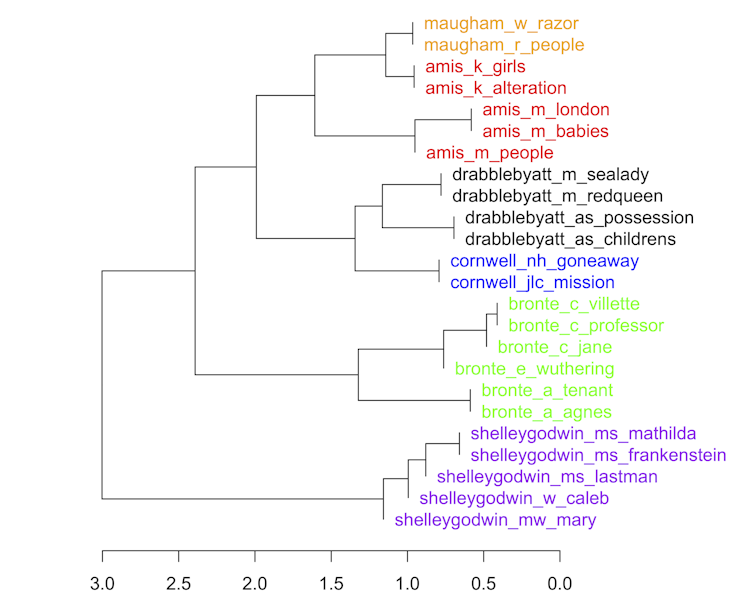From Jane Austen to James Patterson, every author has their own way of writing. And that writing is often discussed in terms of “style”. Essentially, style refers to “how” something is written – it is more concerned with form than content. So when, for example, someone remarks that they “enjoyed the story” but “didn’t like how it was written”, they are commenting on the style.
If you want to see an example of different styles in action, just compare something like The Hobbit by JRR Tolkien to Ulysses by James Joyce. The Hobbit is written for a general audience, it’s a good old-fashioned story told through clear, accessible language. Ulysses is a more difficult read, full of obscure terms, complex phrasing, and cryptic references to other materials.
Obviously, Joyce still tells a story in Ulysses (and a great one at that), but he isn’t solely concerned with telling his tale. Joyce is also using the novel’s structure and language to experiment with form and challenge established ideas of what literature should look like.
But while style differs across authors, it would seem it doesn’t change so much across writers who are part of the same family. In my recent research, I looked at the literary styles of authors related to each other to see how their writing compared. Most members of the same literary families that I looked at tended to write in similar ways.
Literary families
Examining an author’s style based on their tendency to choose particular words is increasingly done with a process called “stylometry”. Stylometry uses computers to statistically measure the most frequent words in a text. Authors are consistent with the regularity with which they use certain words, so counting words can give an indication as to how a particular author or group of authors tend to write.
Stylometry is most often used for authorship attribution, answering (usually unfounded) questions around who really wrote a particular novel, as has been the case with Wuthering Heights and Go Set A Watchman.
But stylometry isn’t just useful in cases where a text’s authorship is disputed, it can also be used to analyse stylistic similarity more generally. And literary families present a unique opportunity to study why authors write in certain ways because relatives tend to develop within similar social environments.
In my research, I used stylometry to look at the writing styles of the following literary families: Kingsley and Martin Amis (father-son), Anne, Charlotte, and Emily Brontë (sisters), William Godwin, Mary Wollstonecraft, and Mary Shelley (father-mother-daughter), A.S. Byatt and Margaret Drabble (sisters), W. Somerset and Robin Maugham (uncle-nephew), John le Carré and Nick Harkaway (father-son).
The results show that relatives involved usually wrote in similar styles. Without exception, each of the authors tested clustered with the other members of their family. This means that the computer was able to tell different families apart, based on their respective writing styles, with 100% accuracy. The next stage would be doing a larger study with more families to see if this trend holds more widely.
This recent experiment was prompted by my previous study on the Brontës (perhaps one of the most famous literary families), which shows that, compared with a selection of their peers, the Brontë siblings all share a remarkably similar literary style. This is perhaps unsurprising when you consider the extent to which the Brontës are known to have collaborated, but this trend also seems consistent across other families.
The creative collaboration seen with families like the Brontës is common practice among relatives who all write. But it’s still significant to see that familial influence is so strong that it can be detected using stylometric techniques. This could indicate that essential characteristics of an author’s voice might be inherently connected to their formative environments and upbringing.
Nature vs nurture
But such findings also revive the (perhaps tired) debate between nature and nurture. Mary Shelley, who is best known for writing Frankenstein, clusters alongside her parents, William Godwin and Mary Wollstonecraft.
While the stylistic similarity between the other literary families analysed might be attributed to collaboration, Mary Shelley never knew her mother as she died ten days after Mary was born. And yet, they still share similar literary styles.
Her mother’s only novel was published before she began her relationship with Godwin, so it is unlikely that his influence is simply connecting the female members of his family. Again, perhaps Mary Shelley had a similar upbringing to Mary Wollstonecraft.
Or perhaps there is something else beyond nurture, something genetic that simply passed from mother to daughter. While such an explanation seems highly unlikely, what is undeniable is that Mary Shelley, without having known her mother, grew to resemble her literary style.
Perhaps then, being an author is just in one’s blood.
James O’Sullivan, Lecturer in Digital Arts & Humanities, University College Cork
This article is republished from The Conversation under a Creative Commons license. Read the original article.
Featured image: Anne, Emily, and Charlotte Brontë, by their brother Branwell (c. 1834). He painted himself among his sisters, but later removed his image so as not to clutter the picture. Photo: Wikimedia Commons


